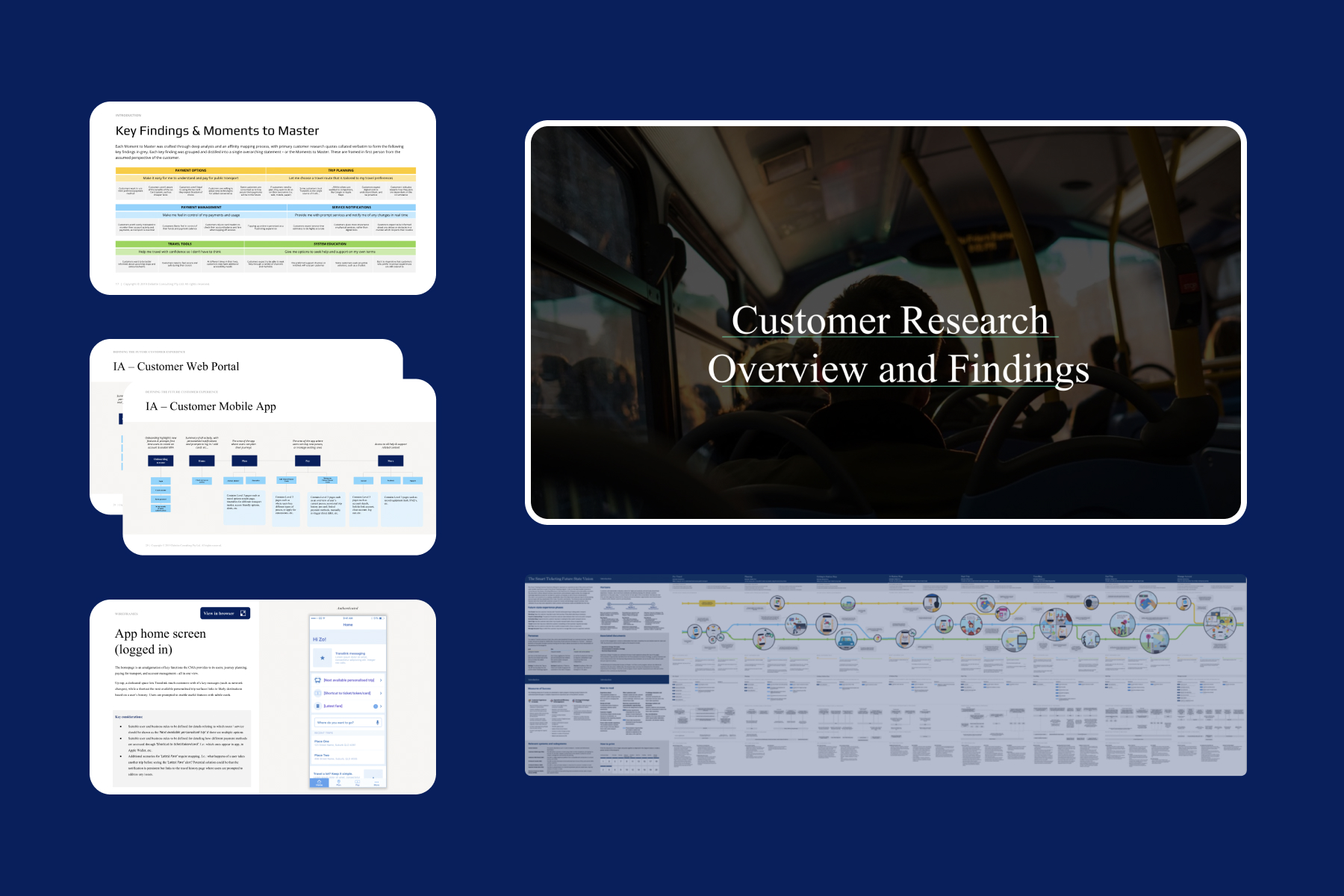Problem
Approach
After an early plan pivot, I started reviewing existing documentation including business requirements, personas, and prototypes to get into the detail. My global competitor research helped spotlight what best-in-class looked like in direct and adjacent competitors. I planned and facilitated a future-state activity as part of a full-day co-design workshop we ran to co-create a definition of success, map stakeholders, and capture challenges, risks and dependencies. Another output of the workshop was alignment on key personas to design for and a list of feature ideas to take into prioritization with customers. Next up we conducted 15 x 90-minute interviews to get qualitative insights into the behaviors and attitudes of TMR’s customers. The outputs of these interviews helped guide our IA and UX design activities, also feeding into the creation of a future-state vision captured in a service blueprint.
Value delivered
At the end of a 12-week engagement, the team and I delivered a future state service blueprint that described the customer experience vision for 3 key personas along target customer journeys. UX features, personalization opportunities, and key initiatives were illustrated in a consumable infographic. Breaking these down into 3 delivery horizons provided our TMR with an actionable and strategic backlog to get started on as they worked towards realizing their future vision for Brisbane’s public transport network. The work I had done – a documented IA and 15 wireframes for web and app – served as robust thought-starters for TMR as they entered the subsequent detailed design phase.
